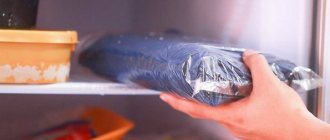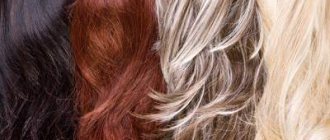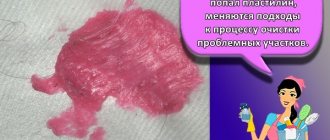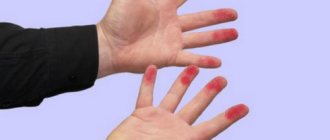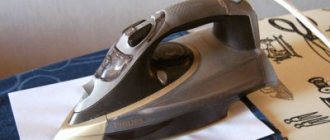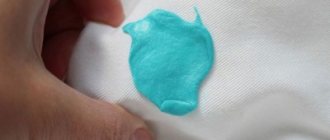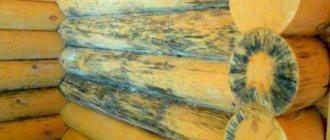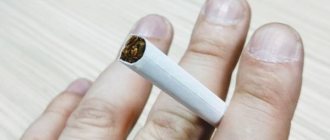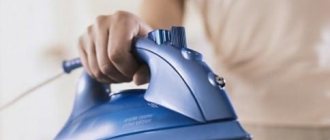Plasticine is removed from children's hair by mechanical cleaning. To make this easier, you can use pieces of ice, which will harden and begin to crumble the plasticine. Ethyl alcohol or any alcohol-containing liquid can be used as a solvent. Liquid vegetable oils will dissolve the material and allow it to be removed by hand. To make this easier, you can use flannel fabric. It is advisable to thoroughly wash your hair several times with plenty of foamy shampoo.
Has your child decided to make a yellow plasticine crown on his head? Or did they just not play carefully with the animal they had just made? Take the time to cut and trim your hair—there are effective ways to safely and painlessly remove play-doh from your child's hair.
Mechanical removal
Small parts can also be removed manually.
Under no circumstances should you use a comb - you will only harm the baby.
On one side you need to take a strand of hair to which the plasticine has stuck, and on the other hand, carefully break the pieces. This works well once the material dries and crumbles. It is important not to pull the child’s thread, but to hold it as tightly as possible in front of the place where the dirt has dried.
Tip: do not remove plasticine mechanically if it sticks to the hair right at the root. Any movement can cause severe pain, in which case you should use the home methods described below.
What are the best methods to avoid removing plasticine?
It is not recommended to use aggressive substances - those that can disrupt the hair structure and make it weaker. This will also negatively affect the condition of the scalp. The cover will become inflamed, covered with scales, and constantly itch.
Expert opinion
Natalia
Housewife
Do not use solvents, stain removers, or washing powders. The recommendation applies to all products with a deliberately aggressive formula. Even toothpaste can negatively affect the condition of your hair and scalp. Therefore, when choosing one method or another, you need to take into account security measures.
Alcohol solutions
Alcohol, as one of the most reliable solvents, compacts dried plasticine well to such a state that it can be painlessly removed from the hair with your hands.
You can make an improvised compress from a cotton pad or a piece of cotton wool, previously soaked in liquid. The wool is applied to the place where the plasticine is drying and left for 10-30 minutes. Alcohol evaporates quickly, so you should periodically replace the cotton wool with a new one, also soaked in solvent.
After this time, the plasticine should soften significantly after being partially absorbed into the cotton wool. You can also wash off the remaining plasticine with your hands, following the precautions described in the previous paragraph.
Having removed most of it, you should wash off the remains of the baby's head with a gentle shampoo.
Attention! The use of other solvents is not recommended. Alcohol practically does not irritate the delicate scalp of a child and cannot damage soft hair, but acetone, white spirit or galoshes are definitely harmful.
Aggressive solvents are more suitable for removing plasticine from carpets, furniture, and dirty sofas.
We finished the game or how we removed plasticine from a child’s hair
Children love to touch everything with their hands. Even if your hands are covered in paint, glue or plasticine. Especially if in paint or plasticine. And I really hoped that we wouldn’t have to deal with such a nuisance as plasticine in our hair. But not fate.
Photo source: zak-zak.ru
This happened by accident when another married couple with a child was visiting us. The children played quietly, and then my daughter came up to me to show off her new thing - a flower in her hair.
The flower, naturally, turned out to be a plasticine cast.
Photo: google.com
This is where the fun began: searching on the Internet, calling moms I knew, discussing with my grandmother. All the advice was different from each other, but the most common was to cut off your hair
.
See also...
✅ Lazy hide and seek is the best thing my husband came up with
✅ We answer “why”. Unusual answers to the most unusual children's questions
✅ My child doesn’t want to go to school, what should I do?
✅ How noodles will help secure a home for a baby. 3 unusual ideas
My daughter is in tears, we are panicking. We decided to try the methods that our friends recommended. And what have we tried!
Removal with ice and vegetable oil had no effect.
Vegetable oil supposedly softens the plasticine, but in reality it only made the hair dirtier, and the plasticine was smeared throughout the strands.
Photo: chistyulka.ru
Attempts to comb out the plasticine with a small brush did not help either. Pulling it out with woolen cloth also proved unsuccessful.
A comb cannot be used in such cases - it will hurt the child.
I had to do everything by hand and try to untangle one hair at a time from the plasticine. But it only smeared more and more along its entire length.
They sat there, playing with their hair, until a friend remembered her hairdresser and called for advice.
Source: advice.help
As a result, she recommended a really worthwhile method!
- First, we had to rinse off the oil to remove excess oil;
- We left the hair to dry a little, patted it lightly with paper towels;
- They took out the largest pieces of plasticine from the hair;
- It was necessary to choose some kind of degreaser, the choice fell on micellar water for removing makeup;
- Apply some water to your hair and rub the area of application;
- Then they carefully began to remove the hair from the plasticine;
- After this, comb your hair thoroughly and wash your hair with hair rinse.
There is no plasticine left! Completely, even the stickiness disappeared. I took this method into account and recommend it to you too)
By the way, besides micellar water, you can take anything that will help degrease your hair. Even an alcohol solution or dishwashing detergent.
Photo: brjunetka.ru
Honestly, I was afraid that such a degreasing method could ruin the fine structure of my daughter’s hair, but everything worked out) In any case, now my daughter only plays with homemade plasticine.
Have you encountered a similar problem? Which method of cleaning hair from plasticine turned out to be the most effective?
Also like and don't forget
to SUBSCRIBE TO MY CHANNEL !)
Using ice
Freezing contaminants can be used as an auxiliary method of mechanical cleaning.
While the alcohol condenses the clay, dissolving it, the ice pieces cause it to harden and crumble. This method is also suitable for removing chewing gum from hair.
Many pieces of ice need to be frozen in a special form, which usually comes with freezers. Ice is applied to the dried plasticine on all sides. When exposed to cold, dirt begins to harden and crumble; it is convenient and easy to remove them manually.
To remove heavy stains, you need to freeze several pieces of ice. In some cases, it may make more sense to freeze several half-liter bottles of plain water - they produce more cold and have a larger surface area than small pieces of ice, which melt very quickly.
The freezing method is used to remove plasticine from clothing.
Removing the remaining stain
Removing plasticine is only the first step: the substance leaves behind untidy, greasy stains, so mechanical cleaning is not enough; chemical treatment and washing are needed.
1. Make a concentrated soap solution (dissolve 200 g of laundry soap shavings in 5 liters of hot water), soak the affected clothing for 15-20 minutes, then treat the plasticine stain with a brush (you can first sprinkle the dirt with soda). This method is well suited for synthetics.
Soaking in soapy water does not replace a full wash: after treating problem areas, wash the item as usual.
2. To remove stains from cotton or other natural material, use the following method: mix water with ammonia (10 drops per glass), thoroughly wipe the plasticine stain with this mixture.
3. Make a paste from hydrogen peroxide and laundry soap shavings (proportions by eye, you should get a thick paste), apply the finished paste to the remaining mark, rinse off after 20 minutes.
Do not use this product on colored items; hydrogen peroxide may dissolve the dye.
Flannel fabric
You can also use a cotton, wool or wool blend cloth to remove dried plasticine from your hair.
Wrap a small piece of cloth around the debris and try to remove it from root to tip. The hair should be held tightly at the base so as not to injure the baby. With a firm but gentle movement, you can pull out a bunch of plasticine from the hair, leaving almost no traces. After cleansing your hair, wash your hair with baby shampoo or toilet soap, sprinkling your hair well with it.
How to remove plasticine from plastic surfaces, including toys
Heat - when heated, the plasticine melts and can be easily removed with a simple dry cloth. You can use hot water or the hot wind of a hair dryer.
Cold is no less effective, but it works differently - put a plastic toy in the freezer for 1-2 hours, they say, after that the plasticine will fall off on its own.
Source: cdn.instructables.com
Sunflower oil
Under the influence of temperature, the oil very quickly softens the plasticine.
Using a watercolor brush, generously moisten the dried lump with warm margarine, butter or sunflower oil. After a few seconds, the clay will be soft enough to be removed with a dry, clean cloth.
Attention! When using vegetable oil, the head must be cleansed with extreme caution, otherwise the hair will remain greasy and have an unpleasant odor.
Vegetable oil will help remove plasticine from wallpaper and dried paint from clothes.
Carpet and upholstered furniture
The same principle applies here as with fabric: cold or heat.
1. Place a plastic bag of ice or just a bag of frozen vegetables on the stained area.
2. To clean the plasticine, heat it with a hairdryer or iron it through a napkin.
Wipe the remaining greasy stain with a cotton swab with acetone, gasoline or ammonia, sprinkle the remainder with soda, and after some time simply sweep off the grease-absorbed powder with a brush.
Alcohol
Alcohol solutions are called “loyal solvents.” The liquid easily copes with plasticine, but does not cause damage to the surface being treated. First, the lump is liquefied, then you use your hands and remove the dirt mechanically. An alcohol compress was considered a good way to influence the mother. Here's what you need to do:
- soak a cotton pad with an alcohol-containing substance;
- apply cotton wool to the dried plasticine;
- hold for 10-15 minutes (ask the child not to move);
- Change compresses periodically, since alcohol tends to evaporate.
Having seen the softening, have you thought about how to get plasticine out of your hair? The bulk of the polymer is removed manually. When a small stain remains, take your child to the bathroom and wash his hair with shampoo. If necessary, the procedure is repeated.
Preventing plasticine from getting into baby's hair
Before starting a creative activity, the child’s hair should be protected as much as possible. First of all, for girls, pin up their long locks, preventing the plasticine from penetrating into the long locks. It is better to wear a headdress on your head: for girls - a headscarf, for boys - a light cap or bandana.
When creating works of art, provide the child with a damp cloth or napkin with which he can wipe his hands as needed. This will teach the baby to be clean and get rid of dirt.
When choosing a material for children's creativity, you need to take into account the paraffin and fat content. Oily plasticine will be more difficult to deal with if it gets into your hair. Although plasticine with a high content of paraffin and fat is more elastic and easy to work with, a small child should buy simpler plasticine.
The baby should be given instructions, explaining the consequences of plasticine getting into the hair.
You shouldn’t limit your child’s creative activities just because he will get his clothes dirty and get dirty himself. You just need to teach him to be neat, choose appropriate clothes and a hat. If plasticine gets into your hair during classes, then you just need to use the tips given above.
